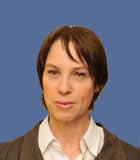
English

Hebrew

Tel Aviv State University, Professor at the Department of Imaging Studies

Head of Nuclear Medicine Department, Hillel Yaffe Medical Center (Hadera)

Private practice at the Top Ichilov Medical Center

Head of Nuclear Medicine Department, Ichilov Clinic (Tel Aviv)

Head of Nuclear Medicine Department, Rambam Medical Center (Haifa)

Senior physician of Nuclear Medicine Department, the central Victoria General Hospital in Halifax (Canada)

Physician of Nuclear Medicine Institute, Rambam Clinic

Physician of the Navy, Israel Defense Forces

Dalhousie University (Canada), clinical specialization in nuclear medicine

Technion – Israel Institute of Technology in Haifa, residency in diagnostic radiology

Tel Aviv State University, Faculty of Medicine

North American Society of Nuclear Medicine and Molecular Imaging

European Association of Nuclear Medicine

Israeli Society of Nuclear Medicine

Israeli Academy of Molecular Imaging
“PET/CT is positron emission tomography combined with CT. The PET scanner provides information on functions and processes inside the body while the CT scanner shows data on the structure of organs and tissues. How do we use this information? By combining the two technologies, we determine where the most active biological processes take place. For this purpose, we need a CT image of the organ’s anatomical structure.
As for PET, the patient receives an injection of a radioactive tracer beforehand. A radioactive tracer is a type of glucose, so the injection does not affect the patient’s health. The tracer travels throughout the body’s circulation system and within 50-60 minutes collects in those cells that use a lot of energy. Strictly speaking, all cells in the human body use energy one way or another. However, abnormal cells – and the tissues where a restorative or inflammatory process takes place – absorb more of the radioactive tracer. This means that the substance collects in certain areas.
So, one hour after the injection the patient has to go to the toilet and urinate. Afterwards, the patient lies down into the scanner. A person should lie on their back and, if possible, keep their arms over the head. If the patient is unable to raise their arms, they should not worry: the specialists will still perform the study. There is only one rule that applies to the scanning process: it is important to stay motionless. The patient doesn’t have to hold their breath or memorize any special instructions. The experts continuously monitor the patient through the window and hear what is happening. Therefore, notwithstanding the absence of other people in the room, the patient can always call for help – if they need any.
The procedure itself takes about 25-30 minutes. It depends on the type of the study. Sometimes, we have to do a double scan. In this case, the procedure takes from 45 minutes to 1 hour.
The PET/CT technology is known not only for its diagnostic advantages. It also helps personalize the therapy instead of treating the patient according to the conventional regimen.”

Was included into the list of the best Israeli doctors by the Forbes magazine in 2021


















